This January marked the 10-year anniversary of my first trip to Russia. Over the last few months, and aided by memories appearing on my Facebook feed, I have been reflecting on my experiences and friendships in Russia and how they have contributed greatly to my life.
I don’t have any familial connection to the country, nor do I have a vocation that requires me to travel to the region. Rather, it is a fascination with the country and its language, history, people, and places that keeps bringing me back.
My first visit was in January 2010, when I was enrolled in a five-month language immersion program at Saint Petersburg State University. At the time, I was a fledgling student at the University of Alberta, majoring in linguistics and Russian language.
I chose to learn Russian as I had become fascinated with the country through previous travels to Eastern Europe and from interactions with my Russian friends. It was also a way to infuse my love for travel with studying.

Smol’nyj Cathedral, the backdrop to our classrooms
Into the Unknown
I have a very vivid memory of arriving in Saint Petersburg. Upon arrival at Pulkovo Airport, I took a short bus ride to the nearest metro station. I watched in awe as people kept appearing on the sidewalk through a thick column of steam coming from a staircase that led from an underground walkway to the frosty –27˚C exterior.
It took me a while to realize that this mysterious staircase was actually the entrance to the metro station, and as I disappeared through the steam and into the metro, I felt (both literally and figuratively) that I was heading straight into the great unknown.
Immersive is a great way to describe my five-month stay in Saint Petersburg. Along with my University of Alberta classmate Brendan, I lived in a massive concrete общежитие (obshchezhitiye), a Russian student dormitory, on the Gulf of Finland.
We had five Russian-speaking roommates from different parts of Russia, and none of them spoke English. The seven of us were spread across three rooms, and we all shared a kitchen, a toilet, and a shower.
The first weeks were hilarious, as communication was made through our inadequate attempts at speaking Russian, gestures, and drawing pictures.
We hosted weekly potlucks in our apartment, bonding over food, drink, and speaking Russian with students from Turkey, Japan, Latvia, Lithuania, Slovakia, Slovenia, Ukraine, Belarus, and, of course, all corners of Russia. Our professors didn’t get upset if we missed a class due to a late night (there were many), as long as we were speaking Russian.
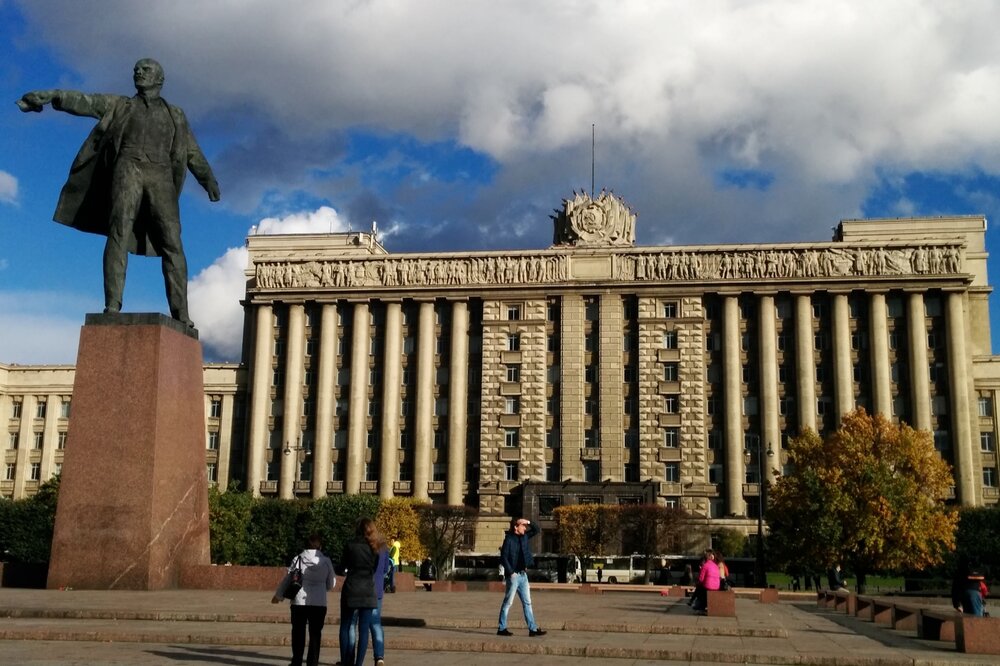
Statue of Lenin at Moskovskaya Square
The Venice of the North
Saint Petersburg is an incredibly beautiful city. There are dozens of postcard-worthy places to see and hundreds of museums to visit. The city is just as charming in the depths of the bitterly cold and daylight-scarce winter as it is at the height of White Nights, when the sun doesn’t really set, but rather dances along the horizon around the summer solstice.
What I remember most of my time in Saint Petersburg was walking across the city and being awestruck at everything that I came across. I would often take the very well-developed (and shockingly deep) metro to different areas of the city and stroll around for a few hours, soaking in a world that was so different than any place I’d been to before.
My student card got me into many of the city’s museums and attractions either for free or at a very reduced cost. The museums are as diverse in their exhibits as they are in architecture. The museums house impressive collections of art, medical oddities, historical objects, and even a jar containing a part of Rasputin that you usually don’t find in a jar.

The Church on Spilled Blood on the Griboedov Canal
The buildings also reflect the city’s rich history, from the onion domes of the Church on Spilled Blood to the bullet-riddled columns that line St. Isaac’s Cathedral.
I loved getting lost in the endless maze in the Hermitage, which was formerly the Russian tsar’s winter palace and is now home to the world’s second largest art collection. To get an idea of just how large this palace is, consider that the film Russian Ark was filmed at the Hermitage in one continuous 96-minute shot.
It’s difficult to imagine how one family managed to make use of this much space, especially considering that they also had numerous other palaces in and around the city (including one with an entire room made of amber).

Palace Square and the Hermitage
My favourite tradition in Saint Petersburg is to hire a boat for a night tour of the canals and bridges in the heart of the city, especially during the White Nights. As the boats weave through the downtown canals, alongside the embankment, and under the raised bridges on the River Neva, it is an easy reminder of why Saint Petersburg is held dear by so many Russians.
To cap it off, many of the tour operators allow champagne (and other beverages) on board, and I thoroughly enjoy sipping on my favourite beverage while soaking in what I believe to be one of the most breathtaking cities in the world.
By the end of the five months, my Russian had improved significantly and I concluded the most interesting semester of my university tenure. Having become accustomed to life in Russia, I found it difficult to leave a place that I felt I was only beginning to understand and explore.
Never Talk to Strangers?
Three years would pass before I returned to Russia to explore Moscow, its sprawling modern-day capital.
In 2013, I found myself en route to Moscow in search of work and adventure after a chance meeting with a Russian customer at a store I worked at in downtown Toronto. He spoke of the many opportunities available for English speakers at the time, and I decided to take a risk and put all of my trust in a complete stranger.
Within 48 hours of arriving, I had at least five job offers in my email inbox. I wound up co-teaching English immersion courses for employees of a state-owned national gas corporation. I had an ideal working arrangement, as I’d work for two weeks, and then had two weeks off to spend as I so wished.
One of my favourite parts of this job was that I had to be accompanied pretty much everywhere I went when I was at the state-owned teaching facility. What would have been a 30-second walk from the bus to the front doors often turned into a 10-minute saga, as I waited to be accompanied by the school’s director. One of my students would later point out that I was suspected of being a spy, so there were always eyes on me.
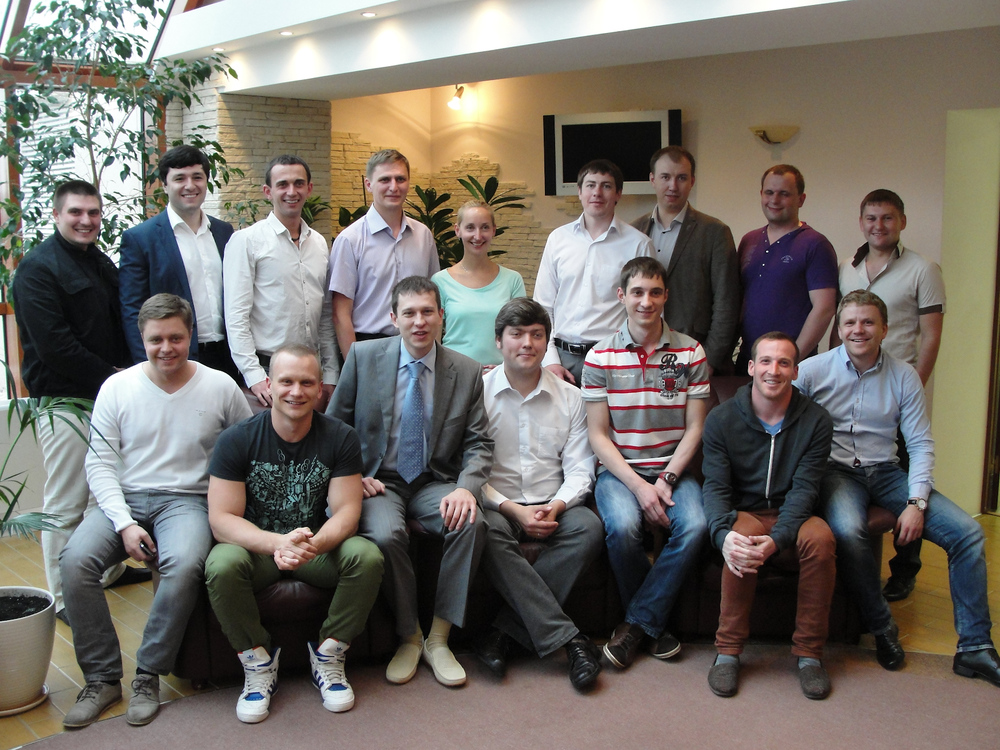
Moscow is a dizzying city, home to over 12 million people and Russia’s political and financial headquarters. As I explored the city on my time off, I found that the city moved at an incredibly fast pace.
In the city centre, motorcades of black SUVs sped down wide streets that were blocked off to allow fast passage of the political elite. Horns blasted as traffic jams brought commuters to a halt in the spiderweb-like roads that span the city (sometimes caused by road closures for the political elite). The packed trains in one of the most impressive metro networks in the world screamed as they navigated corners in the underground maze.
I soon got the sense that people from across the entire former Soviet Union were descending on Moscow for a chance at some of the incredible amount of wealth in the city. As I got to know locals, I was regaled with stories of how intense the 1990s were, and how some people amassed (and lost) an unbelievable amount of money in a very short amount of time. I was also impressed with how resilient the older generations are, who have persevered through pretty much everything life can throw at you.
I was pleasantly exposed to a variety of cuisines from the former Soviet Republics that are common in Russia but relatively scarce in Canada.
Georgian cuisine, with its grilled khatchapuri breads, delicious khinkali dumplings, and comforting kharcho soup, has become one of my favourites to introduce friends to. As a big fan of noodle soups, I was ecstatic to find a new variant with Uzbek lagman. And, of course, I enjoyed learning more about (and tasting) Russian cuisine, with some of my favourites being smoked fish, deep-fried rye bread, and the amusingly named “herring under a fur coat”.
As per tradition, I explored the city by foot, while making excellent use of its 263-station metro network. Many of the stations are museums in themselves, adorned with statues, chandeliers, mosaics, and tributes to the city’s lengthy history. The transit system’s Troyka card also makes it a very affordable way to spend time.
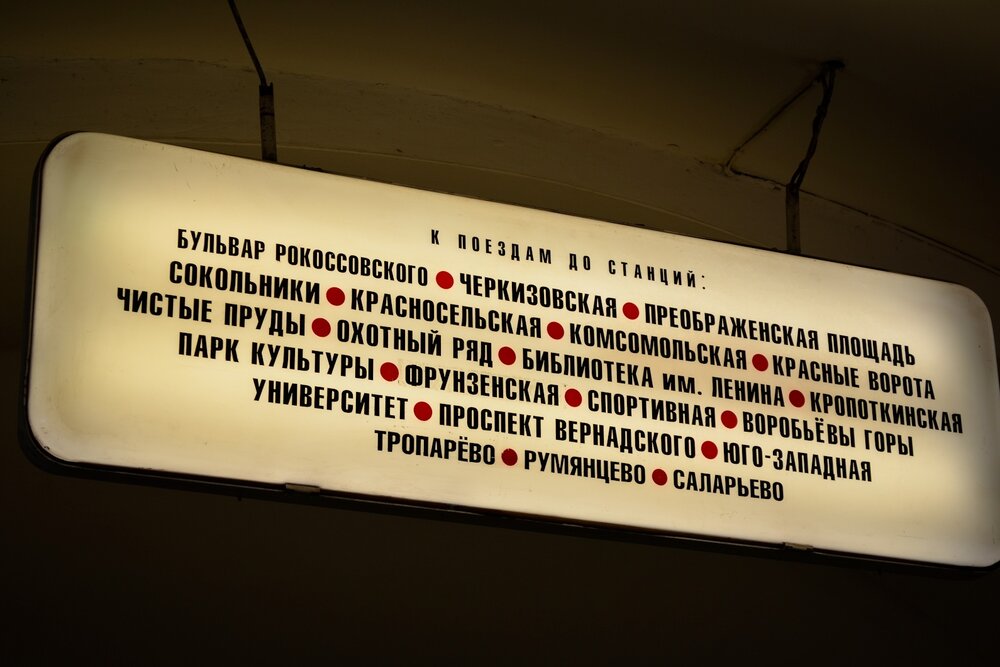
Moscow Does Not Believe in Tears
Being in Moscow for a few months afforded me the opportunity to see many of its sights.
I enjoyed watching the colourful onion domes of St. Basil’s Cathedral come into view as I approached Red Square. I gawked at the intimidating Seven Sisters, a group of seven skyscrapers commissioned by Stalin that jet above Moscow’s skyline. I spent a significant amount of time in the many parks, green spaces, churches, museums, cemeteries, and sports stadiums, trying to get a better sense of where Russia was, is, and will be.
The city really came alive for me as I read Mikhail Bulgakov’s Master and Margarita, which is set in Moscow. As it turns out, the office of the language school I worked with was next door to the apartment in the novel. I couldn’t manage to put the book down, as the streets and parks I was reading about were the same streets and parks that were right in front of my eyes.
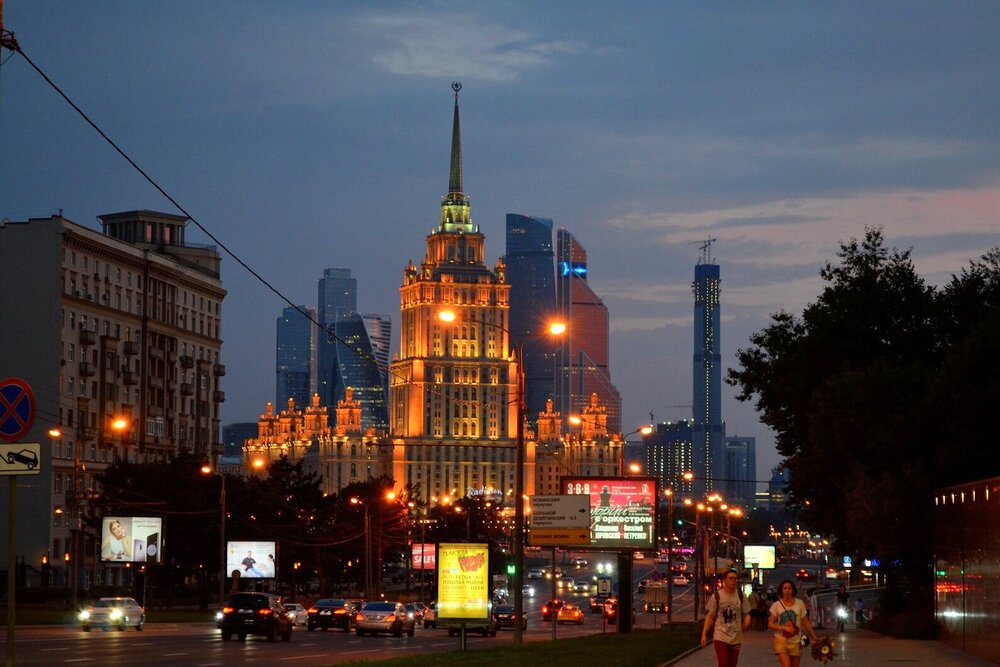
One of the Seven Sisters, now home to the Radisson Collection Hotel on the Moskva River
As the validity of my visa wound down, I scrambled to cross a few more experiences off of my list. I was hosting some Australian friends, Kiran and Rory, whom I had met in Moldova on a weekend trip. The three of us had just returned from an epic train journey to Volgograd and Astrakhan, and I was showing them around the city that had become my home over the past few months.
Moscow State University, one of the Seven Sisters, is perched atop Sparrow Hills and overlooks the Moscow River. I had attempted to enter the building on several occasions, but was shut down by guards who wouldn’t let me through without a student card or other form of pass.
After an internet search and a few phone calls, I found a “tour guide” who offered to show us around the epic building. We joined a small group of Russian tourists, and entered through a side entrance as the security guard looked the other way.
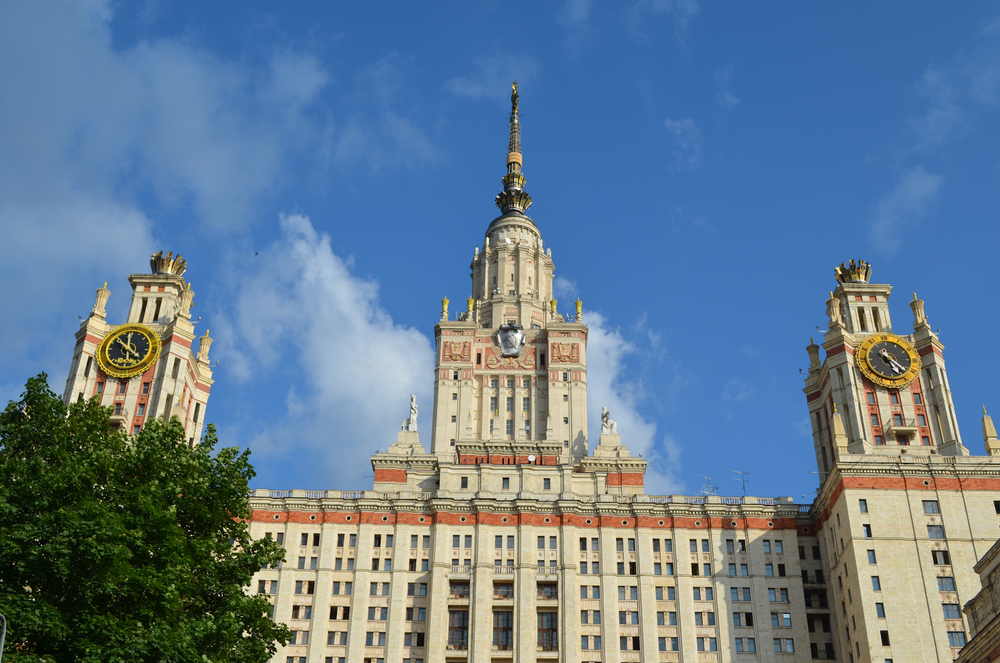
Moscow State University
The interior of the building was fascinating. Our new friend Sergey walked us through halls adorned with marble pillars, into classrooms that had original propaganda posters from the 1960s, and to the main cafeteria, where we stopped for a bite to eat. I did my best to translate for the Australians, but plenty was lost in translation.
Feeling bad for us not getting our money’s worth, after the tour Sergey invited us to join him and his friends on an upstairs balcony for vodka and cigars. Here, on my last night in Moscow, we spent a couple of hours sharing stories, laughing, and enjoying their warm hospitality.

As I sat on a balcony on one of Russia’s most iconic buildings watching the sunset over Moscow, I took a moment to reflect on how learning Russian, first in Canada and then in Saint Petersburg, had led me to the chance encounter with a Russian speaker in Toronto.
This encounter, combined with my questionable willingness to move overseas on a stranger’s recommendation, had further led me to a host of new friendships, fulfilling experiences, and the desire to continue to develop my relationship with the country.
The next day, as I began my journey back to Canada, I couldn’t help but feel like I was just beginning to scratch the surface of this vast, diverse country. With many new friends to visit, and having read about the diversity that exists across Russia, I was already planning my return before I had even returned home.
Conclusion
Moscow and Saint Petersburg are often regarded as Russia’s “two capitals”, the latter having served as the official capital for brief periods over the past few centuries. While I have returned to both cities on several occasions since, Russia is also so much more than its two biggest cities, and I hope to share with you my many other experiences travelling to a variety of cities and regions across Russia sometime soon.
I have always enjoyed helping people plan trips to Russia, including navigating the visa process, train tickets, and itinerary suggestions. Feel free to reach out to me in the Prince of Travel Elites Facebook group – I’d be very happy to help out.

















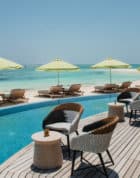
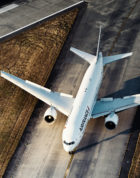

–ó–∞–º–µ—á–∞—Ç–µ–ª—å–Ω–∞—è –∏ —Ç—ë–ø–ª–∞—è —Å—Ç–∞—Ç—å—è, –Ω–∞–ø–æ–ª–Ω–µ–Ω–Ω–∞—è –ª—é–±–æ–≤—å—é –∫ —Å—Ç—Ä–∞–Ω–µ, —è–∑—ã–∫—É –∏ –∫—É–ª—å—Ç—É—Ä–µ. –ù–µ–æ–¥–Ω–æ–∫—Ä–∞—Ç–Ω–æ —Ö–æ—Ç–µ–ª–æ—Å—å —É–ª—ã–±–Ω—É—Ç—å—Å—è, –∞ –ø–æ—Ä–æ–π –¥–∞–∂–µ –∏ –∑–∞—Å–º–µ—è—Ç—å—Å—è. –ü—É—Å—Ç—å –≤–∞—Å –∂–¥—ë—Ç –≤–ø–µ—Ä–µ–¥–∏ –µ—â—ë –º–Ω–æ–≥–æ —É–¥–∏–≤–∏—Ç–µ–ª—å–Ω—ã—Ö –ø—Ä–∏–∫–ª—é—á–µ–Ω–∏–π –∏ –æ—Ç–∫—Ä—ã—Ç–∏–π.
Russia is indeed an amazing country to visit, highly recommend it for everyone. I can only imagine the upcoming simplified e-visa process will create a sudden tourist boom.